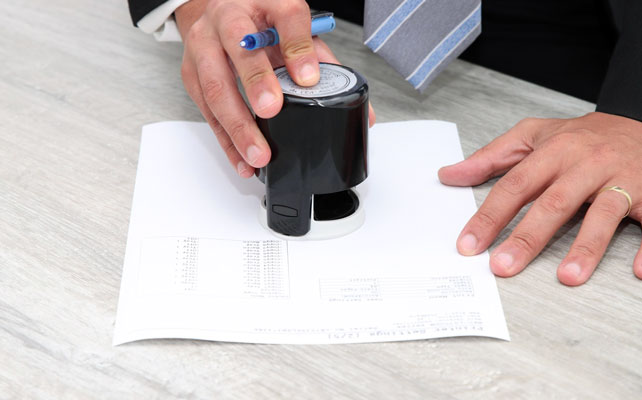Saving money is a goal shared by many, whether it’s for a rainy day, a major purchase, or a secure retirement. While high-risk investment options may offer the lure of significant returns, they carry the potential for substantial losses. For those seeking a safer, more predictable way to grow their money, a Certificate of Deposit (CD) offers a compelling option. CDs are one of the most straightforward financial tools, but they’re often underutilized because many people don’t fully understand how they work or how to use them effectively.
This guide will walk you through what a Certificate of Deposit is, how it functions, and why it might be a beneficial addition to your savings strategy. Whether you’re a first-time investor or looking to diversify your portfolio with low-risk assets, understanding CDs can help you make more informed financial decisions.
What Is a Certificate of Deposit?
A Certificate of Deposit is a type of time deposit account offered by banks and credit unions. Unlike a traditional savings account, which allows you to deposit and withdraw money freely, a CD requires you to commit your money for a specific term, which can range from a few months to several years. In exchange for locking in your funds, the financial institution pays you interest, usually at a higher rate than a regular savings account.
The interest rate and term are set at the time you open the CD. This means your return is predictable and not subject to market fluctuations. Once the CD reaches its maturity date, you receive your initial deposit back, along with the accrued interest. If you choose to withdraw your money before the maturity date, you’ll typically face an early withdrawal penalty, which can reduce your earnings or even your principal in some cases.
CDs are considered one of the safest places to park your money because they’re insured up to $250,000 per depositor, per institution, by the Federal Deposit Insurance Corporation (FDIC) for banks or the National Credit Union Administration (NCUA) for credit unions. This makes them a popular option for conservative savers or individuals nearing retirement who want to protect their capital while earning a modest interest.
How to Find Competitive CD Rates
When shopping for a Certificate of Deposit, the interest rate is one of the most important factors to consider. Banks and credit unions offer varying rates based on the term length, the amount of your deposit, and their internal lending strategies. To maximize your return, it’s important to compare rates across different institutions before committing to a CD.
Online banks often provide more competitive rates than traditional brick-and-mortar institutions because they have lower operating costs. These digital banks pass on the savings to customers in the form of higher interest. The best CD rates typically come from institutions that specialize in savings products or that operate primarily online. Keep in mind that promotional rates may be available for limited times or for specific deposit amounts. Be sure to read the fine print and confirm whether the rate is fixed for the duration of the CD or subject to change.
Types of Certificates of Deposit
Not all CDs are the same. In fact, there are several types designed to meet different savings goals and preferences. Understanding the distinctions can help you choose the right CD for your needs.
Traditional CDs are the most common. You deposit money for a fixed term and receive a guaranteed interest rate. At maturity, you can withdraw your funds or roll them into a new CD.
No-penalty CDs offer more flexibility by allowing you to withdraw your money before the term ends without paying a penalty. These typically come with slightly lower interest rates but are ideal if you want some liquidity.
Bump-up CDs let you take advantage of rising interest rates. If the bank increases rates during your CD’s term, you can request a rate “bump” to the new, higher yield. These are useful during periods of economic uncertainty or rising rates.
Jumbo CDs require a larger minimum deposit, often $100,000 or more. In return, they may offer higher rates than standard CDs. These are best suited for individuals or businesses with significant cash reserves.
IRA CDs are designed to be held within an Individual Retirement Account. They combine the tax advantages of an IRA with the guaranteed returns of a CD, making them a safe option for retirement savings.
Benefits of Investing in a Certificate of Deposit
One of the greatest advantages of CDs is the safety they offer. Your principal is protected, and your interest is guaranteed as long as you don’t withdraw early. This stability can be especially comforting during times of market volatility, when other investments may be losing value.
Another benefit is the predictability of returns. Unlike stocks or mutual funds, where performance can vary widely, CDs provide a clear picture of how much you’ll earn by the end of the term. This makes CDs ideal for financial planning, especially for short- to medium-term goals like buying a car, planning a wedding, or saving for a home down payment.
CDs encourage disciplined saving. Since your money is locked in for a set period, you’re less likely to spend it impulsively. This built-in restraint can be a valuable tool for savers who need a little extra structure to meet their financial goals.
When CDs May Not Be the Right Fit
Despite their many benefits, CDs are not the right choice for every situation. If you anticipate needing access to your money before the end of the term, the early withdrawal penalties could outweigh the interest you earn. In these cases, a high-yield savings account or a money market account might offer better flexibility.
Another potential downside is that CD rates may not always keep pace with inflation. Over long periods, if inflation outpaces the interest you earn, your money could lose purchasing power. For this reason, CDs are generally better suited for short- to medium-term savings goals rather than long-term wealth building.
Making the Most of Your CD Investment
To maximize your CD investment, start by clearly defining your financial goals. Know when you’ll need the money, how much you’re willing to lock away, and what level of return you’re comfortable with. Then, shop around for the best rates and consider the different types of CDs available.
Pay attention to the terms, including penalties, renewal policies, and interest payment schedules. Some banks offer monthly interest payouts, while others compound interest until maturity. Choose the option that aligns with your cash flow needs and savings strategy.

A Certificate of Deposit offers a dependable, low-risk way to save money and earn interest over time. It’s a particularly attractive option for those who prioritize safety, stability, and simplicity in their financial planning. Whether you’re saving for a short-term purchase, building an emergency fund, or diversifying your portfolio, understanding how CDs work and using them strategically can help you reach your goals with confidence. By choosing the right CD type, term, and institution—and keeping an eye on interest rates—you can make this traditional savings tool work to your advantage in today’s evolving financial landscape.








